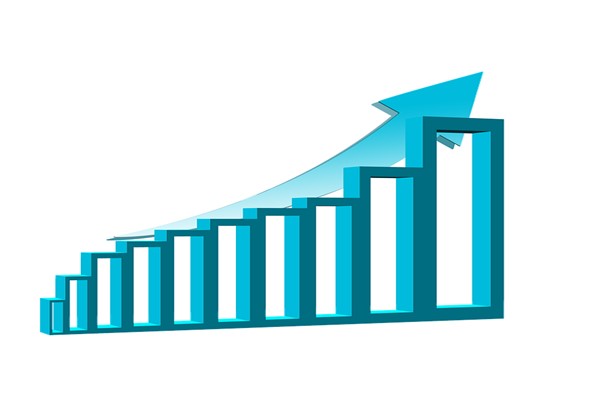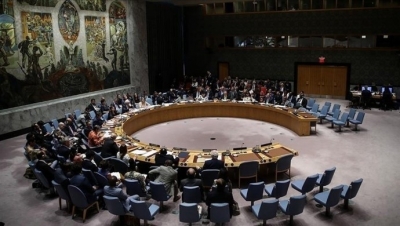The Fed raised interest rates the most since 2000 and decided to begin shrinking its massive balance sheet, putting it in practice the most aggressive monetary policy tightening in decades to control rising inflation. The increase and direction in interest rates is in line with expectations. As the most striking point; We see that the rate decision was taken unanimously in the FOMC. According to the balance sheet plan, released separately from the policy statement, the Fed will begin allowing Treasurys and mortgage-backed securities to decline at an initial pace of $47.5 billion per month in June, to $95 billion in over three months.
If we look at the highlights from the Fed statement;
· Household spending and business fixed investment remained strong, although overall economic activity slowed in the first quarter. Job gains have been strong in recent months and the unemployment rate has dropped significantly.
· COVID-related quarantines in China are likely to worsen supply chain disruptions. The Board is very attentive to inflation risks. (While the message of caution against inflation is preserved, references are also made to economic risks.)
· With appropriate tightening in the monetary policy stance, the committee expects inflation to return to the 2% target and the labor market to remain strong. The Fed expects continued increases in the target range to be appropriate.
· Inflation remains high, reflecting supply and demand imbalances related to the pandemic, higher energy prices and wider price pressures.
· The occupation of Ukraine by Russia causes enormous humanitarian and economic difficulties. The effects on the US economy are rather uncertain. The invasion and related events are putting additional upward pressure on inflation and are likely to put pressure on economic activity.
· The Committee's assessments will take into account a wide range of information, including readings on public health, labor market conditions, inflation pressures and inflation expectations, and financial and international developments.
· The decision to increase the interest rate by 50 bps was taken unanimously. No 75 bps vote came from Bullard. (There was no possibility of a dovish-based comment coming up, but rather Bullard or any other additional member was likely to cast a 75 bps vote. This is relatively dovish-holed when compared to odds.)
Highlights in the statement regarding the balance sheet reduction plan;
· The Committee has decided to begin reducing its holdings of Treasury and mortgage-backed securities on June 1, as disclosed in the Fed Balance Sheet Resize Plans published in conjunction with this statement. (QT will start in June, not May.)
· The cap for Treasury securities will initially be set at $30 billion per month and will increase to $60 billion per month three months later. The decrease in the amount of Treasury securities covered by this monthly cap will include Treasury coupon bills and Treasury bills if coupon maturities fall below the monthly cap. (The ceiling will be reached in 3 months.)
· The cap for agency mortgage-backed securities will initially be set at $17.5 billion per month and will increase to $35 billion per month three months later.
· To ensure a smooth transition, the Committee plans to slow down and then halt the decline in balance sheet size when reserve balances are slightly above what it considers to be consistent with adequate reserves.
In a plan where the intervals of rate hikes are in a sense symbolic, the important thing is of course the speed of the balance sheet reduction. The balance sheet grew as the Fed aggressively bought securities to quell panic in financial markets and keep borrowing costs low as the pandemic spread. As of June 1, the Fed's $8.9 trillion balance sheet will begin to shrink. Powell told Congress in early March that the process would take about three years, which would amount to $3 trillion in reductions.
The increase in the FOMC's federal funds rate target to the 0.75% to 1% range comes after a quarter-point increase in March that ended two years of near-zero rates to help soften the US economy for the first blow. While the Covid quarantines in China have added new pressure to supply chains and downside risks to global growth, the effects of Russia's invasion of Ukraine, which has increased energy and food prices, are also being tried to be calibrated to the policy course. The personal consumption expenditures price index, the Fed's preferred indicator, rose 6.6% during the year through March, more than triple the central bank's target. The most criticism made against the central bank and Powell at this stage is that they waited too long to control inflation in order not to cause recession in the economy.
With widespread signals of intentions to ramp up rate hikes, policymakers are trying to curb the hottest inflation since the early 1980s, when then-chairman Volcker greatly increased interest rates and dramatically slowed the economy in the process. This time, they hope the combination of higher borrowing costs and a shrinking balance sheet will provide a soft landing that curbs inflation while avoiding a recession.

Fed futures funds rate pricing… Source: Bloomberg, CME Fedwatch
The Fed's interest rate standard is now 50 bps, not 25 bps as before. Fed term funds, on the other hand, show that the FOMC will continue to increase interest rates by 50 bps at its next meeting in June as a baseline scenario. If the 75 bps rate is to be made, this will be the highest caliber increase since 1994, and the shock effect will likely be deeper as the global economy also moves towards stagflation. The most prominent sentence in Powell's explanations is; “75 bps is not something the FOMC is actively considering”. Fed futures funds, viewed on the CME Fedwatch and Bloomberg terminal, are currently pricing in an additional 200 bps rate hike by the Fed's December 14 meeting. Considering that the funding upper band has been increased to 1% at the moment, it means that a 3% funding rate will be reached by the end of this year.
Therefore, the Fed seems to have decided to fight inflation on an appropriate basis. In this state, it does not display an overly hawkish image, but it seems that it will adopt a speed that the market deems appropriate. On the other hand, the Fed will quickly reach 2.5%, the rate seen as neutral by the end of the year. Market expectations of a series of rate hikes have already increased borrowing costs and are beginning to curb demand in interest rate sensitive sectors such as the housing market. The benchmark 10-year Treasury yield rose to 3% this week for the first time since 2018. On the other hand, significant references are made to the strength in labor market indicators, which are closely monitored with increasing inflation. The unemployment rate in the US in March was 3.6%, just above the pre-pandemic level. April figures will be released on Friday.
As a result; In an environment where expectations regarding the Fed have increased due to the very hawkish image, a balanced plan has been presented that does not add fuel to the fire and shows that the main direction will continue. Expectations for the terminal rate have not been lowered, just the Fed has not brought a higher rate than anticipated at the moment. Expectations are formed gradually, and of course, the Fed may revise its plans during the balance sheet evaluation intervals. Global stagflation is a huge risk and the Fed's withdrawal from the market will cause hot money economies to be hypersensitive to the new liquidity composition. As the US economy will adopt the new interest rate standardization, there does not seem to be a reason for the Fed to step back from rate hikes.
Kaynak Tera Yatırım
Hibya Haber Ajansı
























